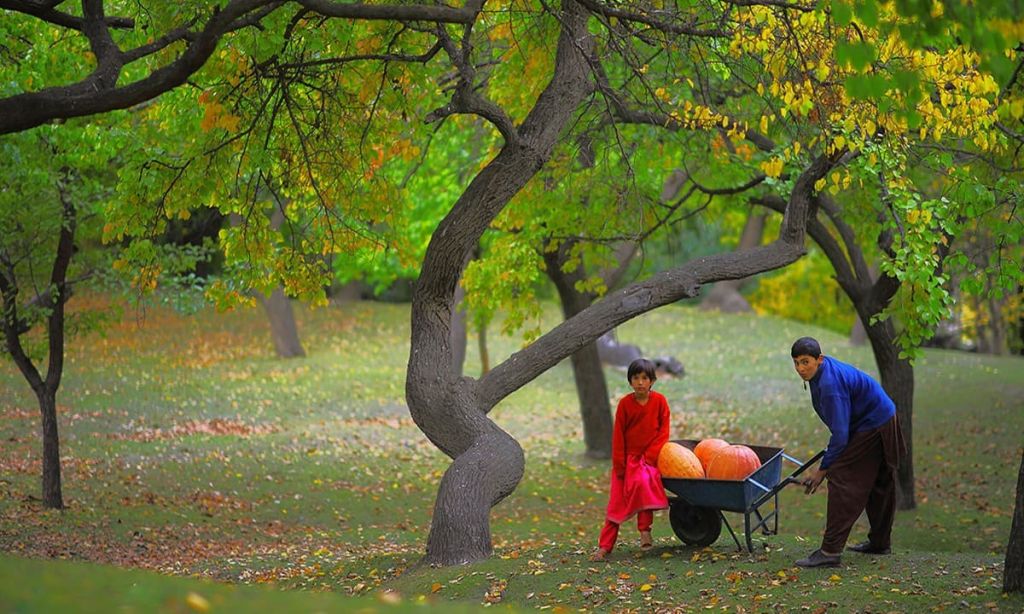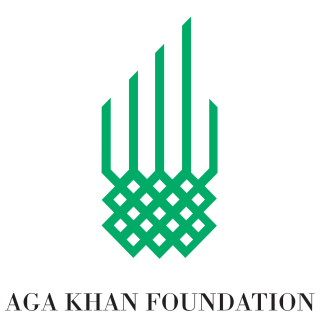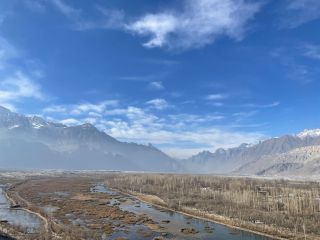Not many travelers visit Pakistan, which is a shame, because the country has many beautiful sights. Pakistan is ideal for beautiful sanctuaries and breathtaking natural wonders.
Pakistan has beautiful mosques, fortresses and mausoleums, which are quite photogenic due to the ornate Mughal architecture. Many places of interest are located in Lahore and Islamabad, the cultural and real capital of Pakistan that is known to be relatively safe. The north of the country, with its majestic high mountains, lush valleys and traditional villages, is also an irresistible attraction for tourists.
With so many sights, it is strange that there are hardly any travel organizations that offer a tour in Pakistan, but safety does of course remain an issue. Do you want to go on holiday to this country with its complex and fascinating history? Here you will find tips about the best sights in Pakistan.
1. Badshahi Mosque, Lahore
Pakistan has many beautiful mosques, but the Badshahi Mosque in Lahore should be at the top of the list of attractions. It is a stunningly beautiful mosque that was built in 1673 and was the largest in the world for over 300 years, until the construction of the Faisal Mosque in Islamabad, Pakistan, in 1987. The huge courtyard, which spans over an area of 26,000 square meters, remains the largest in the world and can accommodate 95,000 worshippers. The Taj Mahal in India, for example, would easily fit in this courtyard.
The Badshahi Mosque – also known as the Emperor’s Mosque – was commissioned by Mughal Emperor Aurangzeb as a symbol of the mighty Mughal Empire. The mosque is built in typical Mughal architecture, with a minaret at each corner and three large spherical white marble domes. The red sandstone walls are decorated with lines and patterns in white marble. The craftsmanship is also in the arches, stucco and detailed frescoes.
Hair of the Prophet Muhammad and other relics are kept in rooms above the entrance gate. The mosque is a popular landmark among British royals when they visit Pakistan. In 1991 the late Princess Diana came by, and in 2019 Prince William and Kate Middleton paid a visit. Non-Muslims are allowed to visit the mosque outside of prayer times (appropriate clothing required).
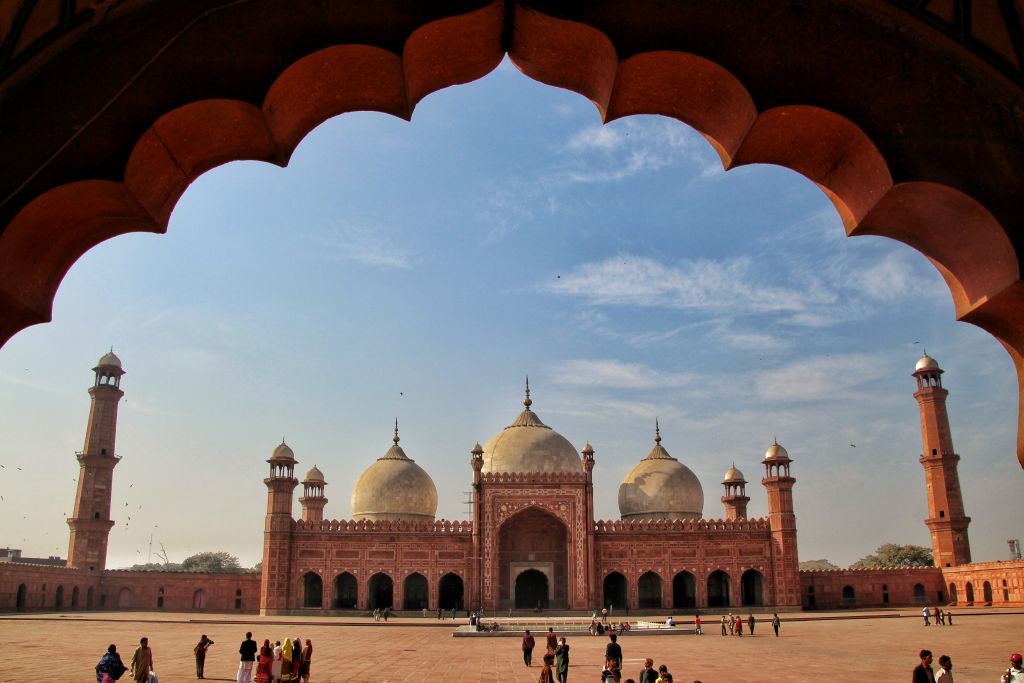
2. Fortress of Lahore
At the Fort of Lahore you take a journey through the history of Pakistan. It is a huge complex to the north of the walled city with 21 monuments, including palaces, pavilions, mosques, watchtowers, mausoleums, baths and museums. There was already a mud castle on this site in the 11th century, but the fortress was renovated and rebuilt in the 17th century.
The Fort of Lahore – also known as Shahi Qila – has been owned by Mughal emperors, the Sikhs and the British colonialists. This is reflected in the mix of Mughal, Indo-Islamic and colonial architectural styles. The highlight is the Sheesh Mahal, or the ‘Palace of Mirrors’. Noteworthy are the huge stairs at the entrance to the royal chambers, which had to be strong enough to carry elephants. Lahore Fort has been a UNESCO World Heritage Site since 1981 and is one of Pakistan’s most popular landmarks.
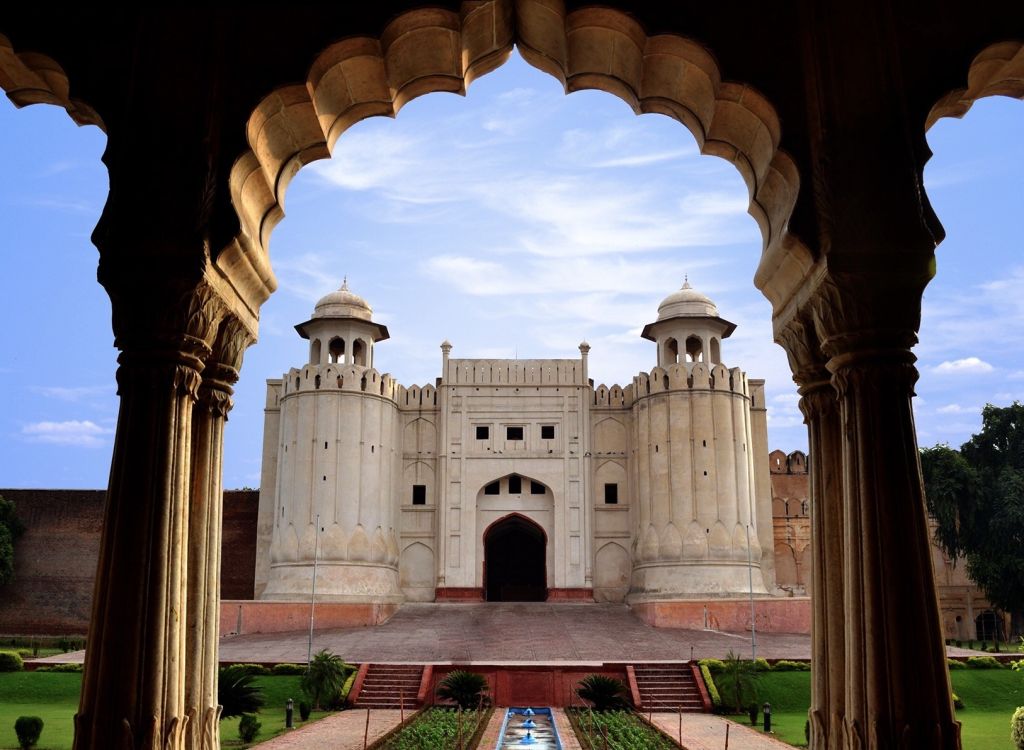
3. Faisal Mosque, Islamabad
The capital Islamabad is modern, neat, clean and green, a relatively quiet oasis compared to the other cities of Pakistan. The biggest eye-catcher is the Faisal Mosque at the foot of Margalla Hills, which was only built in 1987. This mosque is also different from what you may be used to. The place of worship does not have round domes, but rather looks like a launch pad for space rockets (which is what the American CIA actually thought for some time).
Many Pakistani people raised their eyebrows when Turkish architect Vedat Dalokay presented his intriguing design. For the mosque he took his inspiration from the shape of a Bedouin tent, which is surrounded by four 79 meter high minarets. Saudi Arabia has funded the construction of the Faisal Mosque ($120 million). It is the fourth largest mosque in the world, with space for 300,000 worshippers.
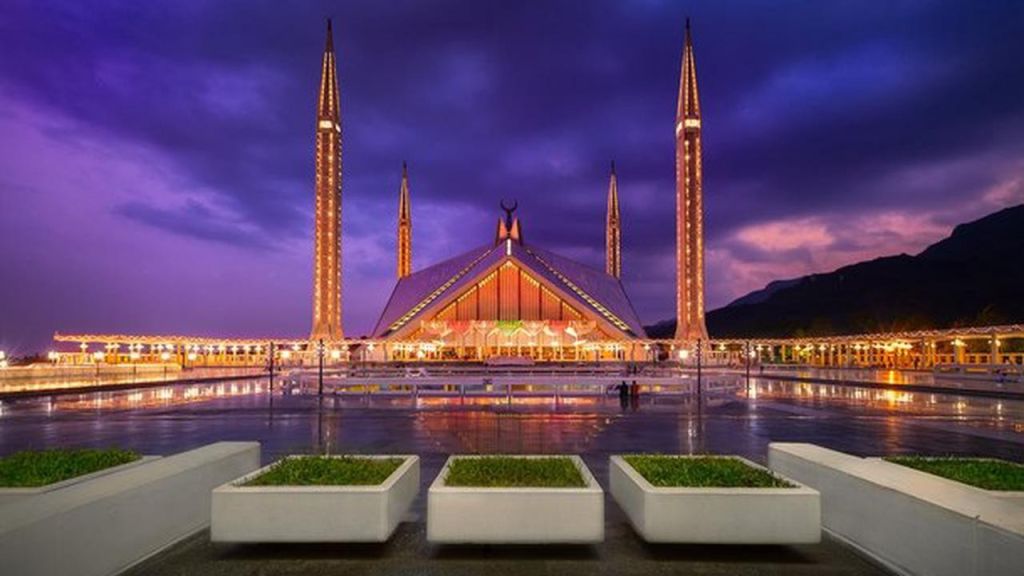
4. Pakistan Monument, Islamabad
The Pakistan Monument in Islamabad symbolizes the unity of the Pakistani people and is dedicated to all those who ‘sacrifice’ for the country. The striking structure is shaped like a blooming flower, with the petals representing the four provinces and three territories of Pakistan.
Opened in 2007, the national monument also stands for the development and progress of the country. At the monument is a museum about the history of Pakistan and the country’s achievements. Try to visit the monument in the evening, when it is beautifully lit.
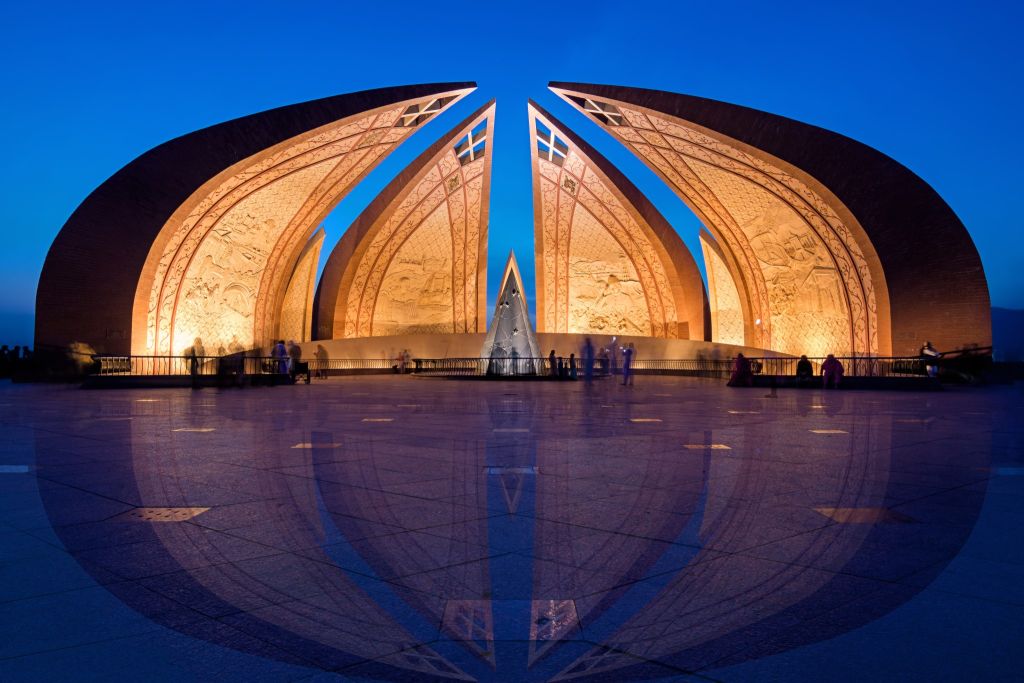
5. Tomb of Mazar-e-Quaid, Karachi
In Karachi, pay your respects at the Tomb of Mazar-e-Quaid, the mausoleum of Pakistan’s founder. Mohammed Ali Jinnah (1876-1948) is regarded as the ‘Father of the Nation’ and led Pakistan to independence from the British Empire. Sadly, Jinnah passed away within a year of the creation of the new country of Pakistan, but his efforts are remembered in this simple and moving monument. The Jinnah Mausoleum, as it is also called, is made entirely of marble and has a striking white dome. The mausoleum also contains Jinnah’s sister and the first Prime Minister of Pakistan. There is a changing of the guard at the monument every four hours. Opened in 1970, the mausoleum is one of the most popular landmarks in Karachi, the largest city in Pakistan.
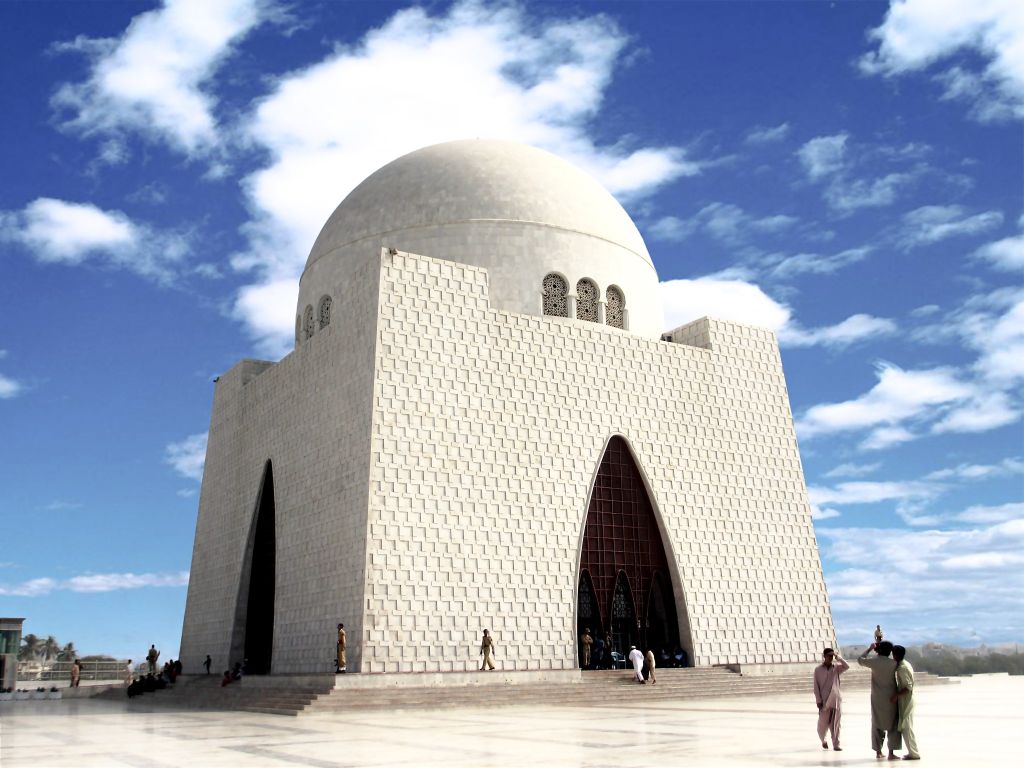
6. Karakoram Highway
For many adventurous travelers, the Karakoram Highway in the far north of Pakistan is on the bucket list. Affectionately known as the ‘KKH’, this is the highest highway in the world, most of which is above 3500 meters. The highest point is the Khunjerab Pass, at an altitude of 4693 meters. The 1,200-kilometer road runs from the Pakistani city of Abbottabad (where Osama bin Laden was assassinated) to Kashgar in China.
The Karakoram Highway was opened in 1978 and has been worked on for about twenty years by Pakistani and Chinese workers. The road passes through breathtaking landscapes with green valleys, raging rivers and views of mountains over 8,000 meters high. After every bend and conquered pass, a new adventure awaits you. At the border you can withdraw money at the world’s highest ATM (at the world’s highest border post). Driving all the way from Pakistan to China will take you about two weeks, if you want to see something along the way.
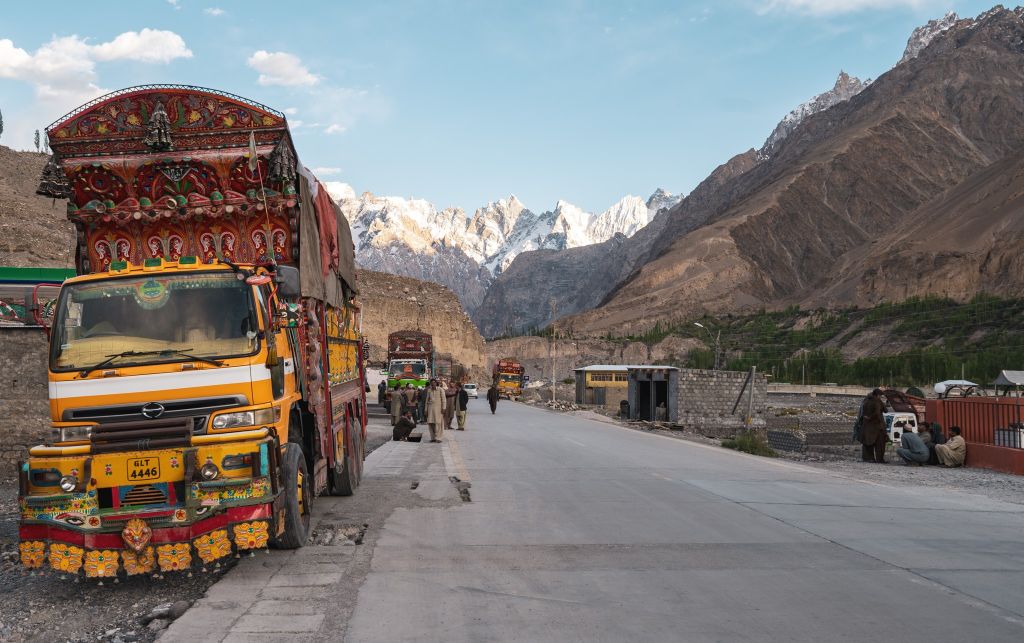
7. Shalimar Gardens, Lahore
A peaceful and dreamy place in Lahore are the Shalimar Gardens, paradise gardens created in 1641-1642 by Mughal Emperor Shah Jahan. They are laid out on three terraces with pavilions, waterfalls, large ornamental ponds and no fewer than 410 fountains. In terms of flora, you will see cypresses, flowering fruit trees, poplars and numerous flowers. During the Sikh era, many marble pavilions were demolished for the construction of the Golden Temple in Amritsar, but those pavilions were later restored. The Shalimar Gardens are also on the Unesco World Heritage List for its ‘unparalleled elegance’.
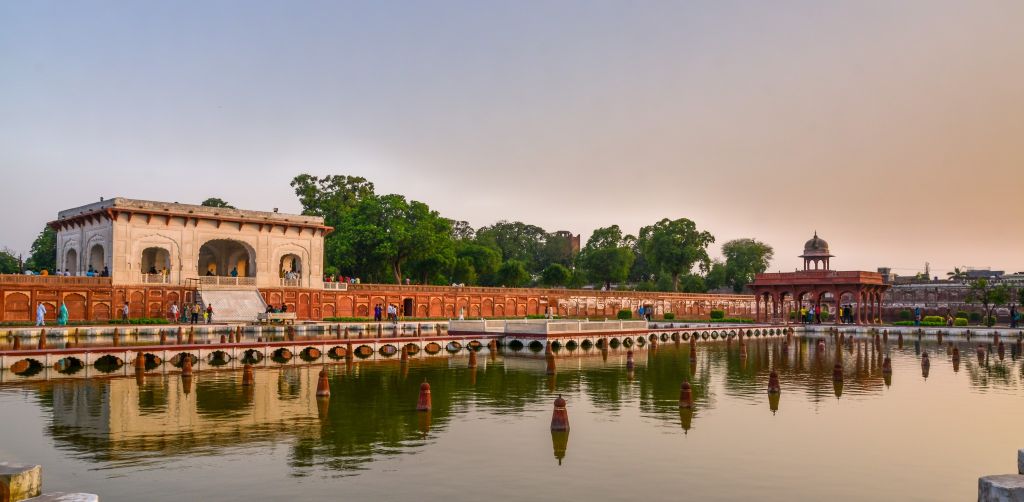
8. Derawar Fort
In the Cholistan Desert about 100 kilometers south of the city of Bahawalpur stands Derawar Fort, a massive stone fortress that can be seen for miles. The desert fortress was probably built in the 9th century by the local ruler Rai Jajja Bhatti. In the Middle Ages, it was an important stopover for Muslim pilgrims traveling from India to Mecca and was on the trade route between Central Asia and the Indian subcontinent.
The fortress has a circumference of about a mile and walls up to 30 meters high. Forty bastions rise from the desert. A large part has now fallen into ruins and there are sounds that the Pakistani authorities should do more with maintenance and repair. Due to its remote location, you can only visit the fort with a tour.
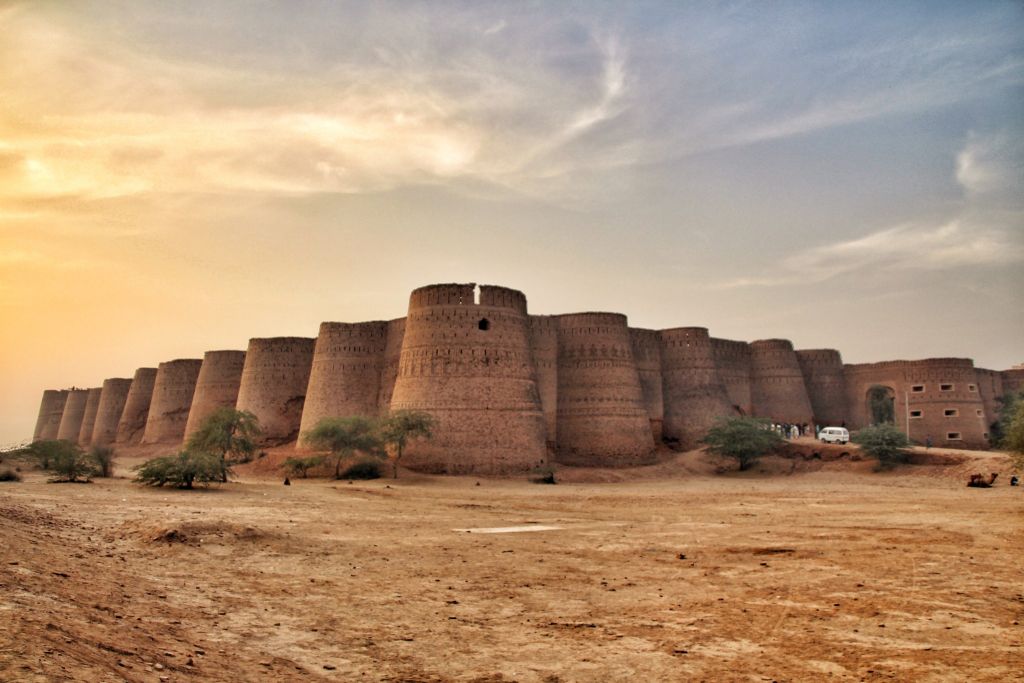
9. Hingol National Park
Hingol National Park has an alien looking landscape with unique rock formations, vast canyons, dramatic views and even a mud volcano, making you feel like you’re stranded on another planet.
It is the largest national park in Pakistan and covers over 6.100 sq km and is located 190 km from Karachi, making it an ideal trip for those staying in Karachi. The park is named after the Hingul river which flows into the Arabian Sea and is home to large numbers of marine life. As it has six different ecosystems with desert, plains, forest, mountains and home to a large number of birds, reptiles and elusive mammals such as leopards, wolves and ibex, it’s one of the most unique national parks in Pakistan and maybe even its neighbouring countries. Because of the highway which runs through the park it is easily accessible, drawing many visitors who come to stare in awe at the rock formations.
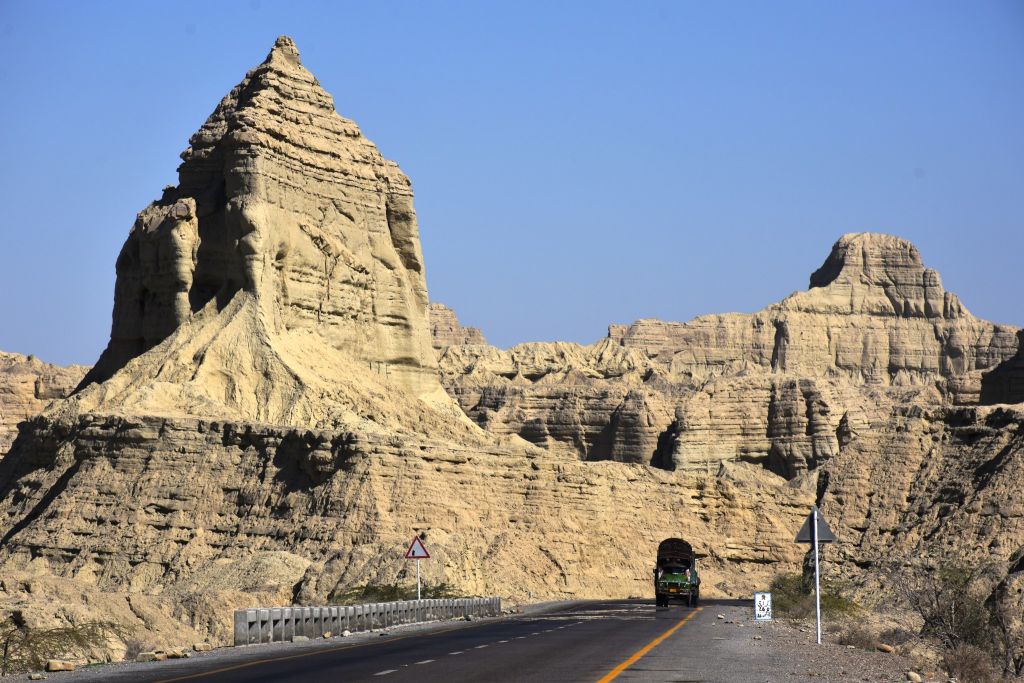
10. Hunza Valley
Hunza Valley is a mountainous area in Gilgit Baltistan, Pakistan and formerly a princely state for more than 900 years, until 1974, when it was dissolved. Visitors to Hunza are overwhelmed by the rugged charm, the fragrant breeze singing through graceful poplar trees and the velvet-like green carpet of wheat fields, set against the background of snow-covered mountains.The best time to visit the valley is from May to October. The valley is around 2.400 meters above sea level and has a lot of peaks rising above 6.000 m and even 7.000 m, providing you with spectacular views. Throughout the valley we can find numerous castles, watchtowers and forts as well as rock paintings and other places of interest.
